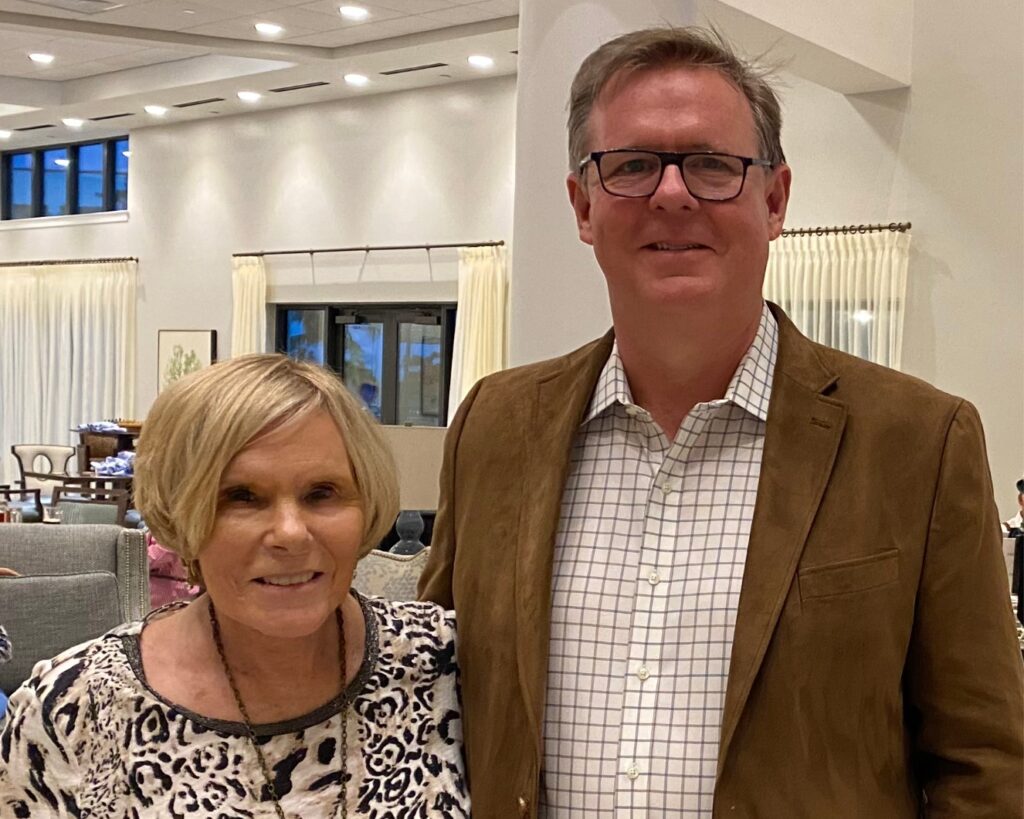It was a total mystery…Patient Glenda Bridges arrived at NCH just after suffering her third stroke this year. What made this so unusual is that it’s very rare to have strokes hit the same area repeatedly, but that was Glenda’s case. While her first two strokes had happened weeks apart in another state, she was in Naples for the third.
“She came in with symptoms of severe vertigo, double vision, wasn’t able to walk, and said it was the third time this happened,” says Dr. R. Viktoria Totoraitis, a neurologist and medical director of the NCH Wingard Stroke Institute. “When I got the MRI, I could see the previous two strokes and this one, which were all in the same exact region. Usually, if it’s the same area, something’s wrong with that blood vessel, but that wasn’t the case here. The other main cause of strokes – an injury of the heart – can flick off pieces of a clot, but that was basically ruled out, since it would be like perfectly throwing a dart and hitting the exact same spot over and over with these strokes. I didn’t want her to have any more, so we needed to figure this out.”
Dr. Totoraitis turned detective, going way beyond what Glenda’s other doctors had done. She started asking deep questions about what Glenda had been doing around the time of the three strokes.
“The first night I was at NCH, Dr. Totoraitis pulled up her chair up to the bed, leaned on her elbow and started talking to me like I was her best friend, made me feel so comfortable,” says Glenda. “I’ve never had a doctor like that, and I’ve had lots of doctors. She asked, ‘What are you doing when these happen?’ I said, ‘I’m not doing anything; I just wake up with these stroke symptoms.’”
Glenda previously had spine surgery and possibly chronic scar tissue and bony spurs from years of wear and tear in that area. Dr. Totoraitis surmised that, since Glenda sleeps in a very specific position, curled up on her right side in almost a fetal position, maybe that was kinking up the vessel and pooling the blood into a clot, which went into her brain when she woke up. While other doctors dismissed the idea, Dr. Totoraitis insisted on Glenda getting a CT scan while posed in the same position she uses for sleep, which shocked the technician. Turns out Dr. Totoraitis was right!
“The day after the results, I thought she was going to do cartwheels in the room,” says Glenda. “Nobody believed her, but she stuck to her guns. Now, I sleep on my back with a soft neck collar, and I’ve had no more instances.”
Glenda’s son, Mark, says, “Other doctors had checked for everything: viruses, diabetes, whether she had an infection due to a dental implant, everything. They didn’t know where the strokes were coming from. Dr. Totoraitis just kept digging. I don’t think we could have been anywhere else in the world to have that kind of care – her brain and bedside manner – and we’re so grateful. I’m convinced my mom would have had more strokes, if Dr. Totoraitis hadn’t figured this out before my mom left the hospital. She was in and out in three days, and it probably saved her life.”
NCH wasn’t the closest hospital when Glenda had that third stroke, but she insisted the ambulance take her there and says her friends in the Naples area would have done the same. She says it was fate. The NCH Wingard Stroke Institute is one of only five comprehensive stroke centers in Florida.
Mark Bridges notes, “Innovation doesn’t happen on its own. It requires strong community support to provide cutting-edge technologies and world-class facilities. In a world where things change rapidly, supporting your local hospital is more important than ever.”
We’re honored to have helped the Bridges family. If you would like to join them in supporting NCH, you can call (239) 624-2000 or contribute at NCHmd.org/donate.
